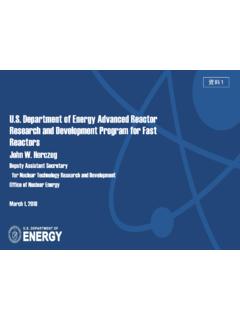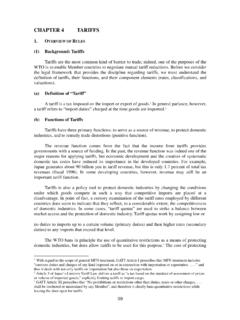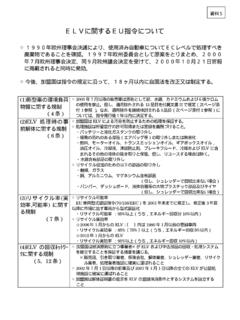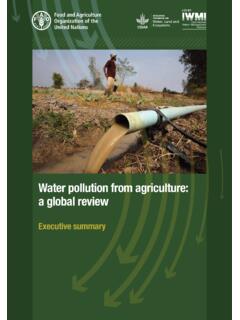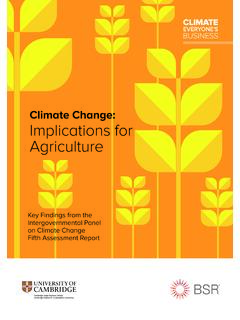Transcription of Overview of Japan’s Green Growth Strategy Through ... - METI
1 Overview of Japan s Green Growth StrategyThrough Achieving Carbon Neutrality in 2050 Jan 2021provisional translation1 Background and concept In Oct 2020, Prime Minister Sugadeclared Japan s intention to aim for carbon neutrality by 2050. This challenge has become the core of Japan's Growth Strategy . The Green Growth Strategy is an industrial policy which aims to create a positive cycle of economic Growth and environmental protection, together with the business community. The aim is to set ambitious goals and fully support the private sector s efforts toward carbon neutrality.
2 The Strategy includes 5 cross sectoral policy tools (support measures)and action plans for 14 sectors, and will be updated Growth Strategy in line with Carbon Neutrality in Outlook for Carbon Neutrality in 2050 (Reference) of the Green Growth StrategyAnnex1. Points ofthe 5 Policy ToolsAnnex2. List of 14 Growth Sectors2 Items1(1). Green Growth Strategy in line with Carbon Neutrality in 2050 In Oct 2020, Japan declared its intention to achieve a carbon neutral society by 2050. Tackling climate change is an opportunity for further Growth . Green Growth Strategy is an industrial policy towards a Positive cycle of economicgrowth and environmental protection However, it is not easy to realize.
3 Support for the private sector to tackle ambitious goals = Role of the Government The Government presents a concrete national vision and goals,which motivates business players This Strategy provides a reference on both the energy policy and energy outlook for 2050 CN in order to identify industries with high potential This will constitute a list of 14 sectors with high Growth potential, for which the Government will provide necessary policy measures and show ambitious goals. 3 Decarbonization of electricity RenewablesMaximum introduction. Grid development, cost reduction, batteries.
4 Offshore wind and battery industry Hydrogen powerPursue as an option. Increase of supply/demand, infrastructure, cost reduction Hydrogen industry Thermal power generation with CCUS/Carbon RecyclingPursue as an option. Technologydevelopment, site development, cost reduction CarbonRecycling, ammonia as fuel industry Nuclear PowerProven de-carbonization technology. Further safety enhancement,restart of plants. Maximizing utilization of existing nuclear infrastructure, while aiming to decrease dependency on nuclear power. R&D for safer next-generation reactors4CO2 emission by sectorElectricityIndustry25%Transportoff ice/houseother1(2).
5 Green Growth Strategy in line with Carbon Neutrality in 2050 Promote electrification in all sectors. For non-electricity demand, hydrogen use and CCUS .Industry Manufacturing processTransport Electrification,bio fuel, hydrogen fuelBusiness/household Electrification, hydrogen, batteries Hydrogen, auto/battery, transport and housing industries Storage of electricity Carbon neutral society means GrowthStrategy underpins robustdigital infrastructure Semiconductor/ICT industryElectricity Smart grid, supply/demand response, infrastructure maintenanceTransport Self driving Factory Factory automationBusiness/household Smart houses.
6 Robots From R&D to implementation+ cost reduction Expected economic gain is 90 trillion yen in 2030 and 190 trillion yen in 2050(approximately, 880 billion USD and trillion USD)51(3). Green Growth Strategy in line with Carbon Neutrality in 20502(1) Energy Outlook of Carbon Neutrality in 2050 (Reference) Electricity demand will increase by 30-50% ( ~ trillion kWh) Maximum introduction of renewables Challenges;power adjustment/transmission/grid inertia, social conditions, cost Unrealistic to cover all electricity demand only with renewables Setting 50-60% renewables in 2050 as a reference, based on experts comments Further innovation needed in thermal power plants with CCUS and hydrogen 10% -hydrogen and ammonia power generation, 30-40% -nuclear and thermal power plants with CCUSas a reference Analyzing scenarios further.
7 Discussion continues towards revision of the Strategic Energy usage of bilton values are the amounts of CO2 derived from energyCarbon removal30-50% increase of electricity demandFossil fuelHydrogen, methanation, synthesis fuel, biomasselectrificationDecarbonized electric sourcesRenewablesNuclearThermal +CCUS/Carbon RecyclingHydrogen/ammoniaPlantation, DACCS 50 60 30 40 billion billion ton ( 25% 2050 Emission reduction + Removals = net zero 100% (Future discussionwill not be limited to this reference value) 7 10 2(2) Energy Outlook of Carbon Neutrality in 2050 (Reference) Structure of the Green Growth Strategy Set an ambitious goal to induce investment.)
8 Government will provide all policy measures; funding, tax, regulation/standard, PPP. Enhance international collaboration, considering global market or global ESG investment. Develop sector-specific action plans for 2050. (1) R&D phase: Government fund + private R&D investment (2) Demonstration phase:PPP that induce private investment (3) Scale up Phase:Promote demand Through public procurement, regulation/standard cost reduction Through mass production (4) Commercial phase:Commercialization without further public support Covering private company s needs, from R&D to capital investment for 2050 creation by regulatory reform, standards and financial markets-Cost reduction Through increase of private investment Government fund (2 trillion yen.)
9 Support long term R&D and demonstrations) Tax benefitsfor capital investments, R&D and loss carry forward Regulatory reform (Hydrogen filling stations, grid rules, gasoline cars, procurement) Standards (EV quick charge, bio jet fuel, safety standards for floating wind turbines) Inducing private financing (Rules for financial market, disclosure, evaluation)8 Tax incentiveRegulatoryReformInternational CollaborationGrant fundingGuidance policy on Finance9 Annex1. Points of the 5 Policy tools Green Innovation Fund: 2 trillion yenover 10 years Stimulate 15 trillion yenworth of private R&D and investment.
10 Cooperationwith various players, including both developed and emerging countries, on innovation policy, joint projects including third countries, standardization and rule-making, and providing wide variety of solutions toward de-carbonization World wide promotion efforts Through Tokyo Beyond-Zero Week Consider regulatory reform in areas such ashydrogen, offshore wind power, and mobility/batteries. Discuss issues concerning carbon border adjustment and related policies with a view to ensuring global level playing field Formulate guidelines for transition finance and establish a scheme for long-term funds with an interest subsidy (1trillion yen in 3 yearsin business scale basis) to attract global ESG investment.
